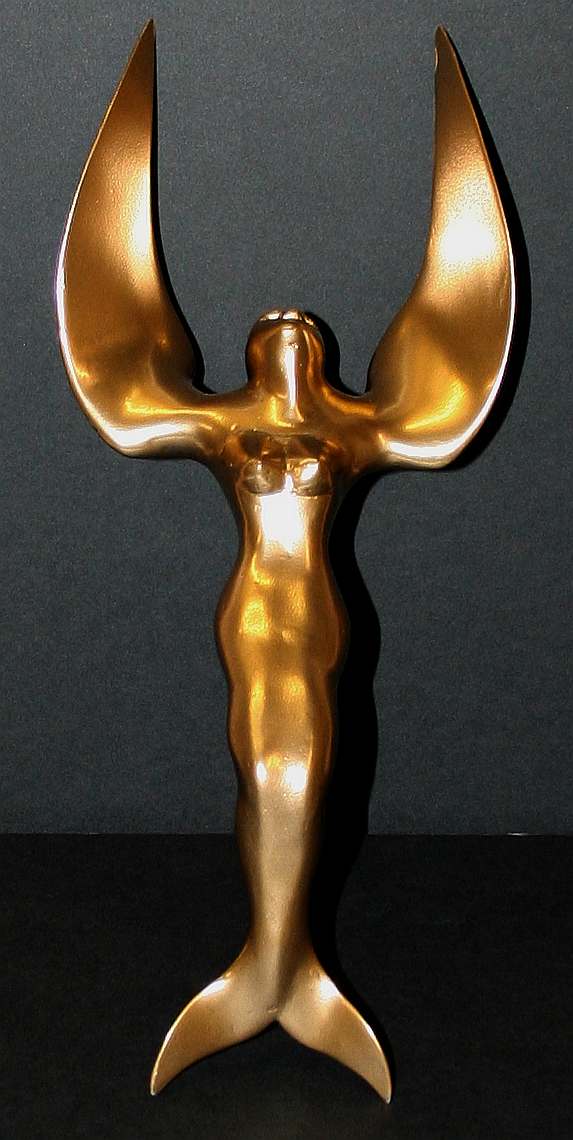Pharaoh
was the ancient Egyptian name for the office of kingship. The term began
as a reference to the king's palace, but the meaning loosened over the
course of Egyptian history until in the late period it was
interchangeable with the Egyptian word for king. Such rulers were
believed to be the incarnation of Horus.
Etymology
The
term Pharaoh ultimately derives from a compound word written as pr-`3
also spelt par'o in texts, used only in larger phrases like smr pr-`3
'Courtier of the Great House', with specific reference to the buildings
of the court or palace itself. From the Twelfth Dynasty onward the word
appears in a wish formula 'Great Home, may it live, prosper, and be in
health', but only with reference to the buildings of the court rather
than the king himself.
However,
the earliest instance where pr-`3 is used specifically to address
the king is in a letter to Amenhotep IV (Akhenaten) in the
mid-Eighteenth Dynasty (1550-1292 BC)
which is addressed to 'Pharaoh, all life, prosperity, and health!'.
. From the Nineteenth Dynasty onwards pr-`3 on its own was used
as regularly as hm.f 'His Majesty'. The term therefore evolved
from one specifically referring to a building to a respectful
designation for the king or prince, particularly by the Twenty-Second
Dynasty and Twenty-Third Dynasty. By this time, the Late Egyptian word
is reconstructed to have been pronounced *par-ʕoʔ
whence comes Ancient Greek φαραώ
pharaō and then Late Latin pharaō.
From the latter, English obtained the word "Pharaoh". Over
time, *par-ʕoʔ
evolved into Sahidic Coptic prro and then rro (by
mistaking p- as the definite article prefix "the" from
Ancient Egyptian p3).
A
similar development, with a word originally denoting an attribute of the
king eventually coming to refer to the king himself, can be discerned in
a later period with the Arabic term Sultan.
Regalia
The
king of Egypt wore a double crown,
created from the Red Crown of Lower Egypt and the White Crown of Upper
Egypt. In battle, the pharaoh wore a blue crown of a different shape.
All of these crowns were typically adorned by a uraeus, which was
doubled under the Twenty-Fifth Dynasty.
The
pharaoh also wore a striped headcloth called the nemes, which may
be the most familiar pharaonic headgear. The nemes was sometimes
combined with the double crown, as it is on the statues of Ramesses II
at Abu Simbel.
The
pharaoh would also wear a false beard made of goat
hair during rituals and ceremonies [1].
Egyptologist
Bob Brier has noted that despite its widespread depiction in royal
portraits, no actual ancient Egyptian crown has been discovered.
Tutankhamun's tomb, discovered largely intact, did contain such regal
items as his crook and flail, but not a crown. Crowns were assumed to
have magical properties, and Brier's speculation is that there were
items a dead pharaoh could not take with him which therefore had to be
passed along to his living successor.
Titles
The
official titulary of the king by the Middle Kingdom consisted of five
names; for some rulers, only one or two of them may be known.
Of
the three great non-consort Queens of Egypt (Hatshepsut, Sobeknefru, and
Twosret), at least Hatshepsut took the title in the absence of an
existing word for "Queen regnant". Also notable is Nefertiti
who was made co-regent (the pharaoh's equal) during the reign of
Akhenaten. Some scholars further suspect that her disappearance
coincides with the rise of Smenkhkare to the throne after Akhenaten's
death, making Nefertiti yet another female pharaoh in Egyptian history.
During
the eighteenth dynasty (sixteenth to fourteenth centuries B. C.) the
title Pharaoh was employed as a reverential designation of the king.
About the late twenty-first dynasty (tenth century B. C.), however,
instead of being used alone as before, it began to be added to the other
titles before the king's name, and from the twenty-fifth dynasty (eighth
to seventh centuries B. C.) it was, at least in ordinary usage, the only
title prefixed to the royal appellative. For instance, the first dated
instance of the title Pharaoh being attached to a king's name occurs in
Year 17 of Siamun on a fragment from the Karnak Priestly Annals. Here,
an induction of an individual to the Amun priesthood is dated
specifically to the reign of Pharaoh Siamun. This new practise
was continued under his successor Psusennes II and the twenty-first
Dynasty kings. Meanwhile the old custom of referring to the sovereign
simply as Per'o continued in traditional Egyptian narratives.
The
Biblical use of the term reflects Egyptian usage with fair accuracy. The
early kings are always mentioned under the general title Pharaoh,
or Pharaoh the King of Egypt; but personal names begin to appear
with the twenty-second dynasty, though the older designation is still
used, especially when contemporary rulers are spoken of. The absence of
proper names in the first books of the Bible is no indication of the
late date of their composition and of writer's vague knowledge of
Egyptian history, rather the contrary. The same is true of the use of
the title Pharaoh for kings earlier than the eighteenth dynasty, which
is quite in keeping with Egyptian usage at the time of the nineteenth
dynasty.

Pharaohs
in the Bible
The
first king mentioned by name is Shishaq (probably Sheshonk I), the
founder of the twenty-second dynasty and contemporary of Rehoboam and
Jeroboam (1 Kings 11:40; 2 Chronicles 12:2 sqq.). The term Pharaoh is
prefixed to his name in the Great Dakhla stela—as in Pharaoh Shoshenq—which
dates to Year 5 of his reign.
The
next king, So—an ally of Hoshea—King of Israel (2 Kings 17:4), is
commonly identified with Osorkon IV, who was a minor pharaoh at Tanis
who ruled over a divided Egypt. He was contemporary with Tefnakht of
Sais and Nimlot of Hermopolis among many other Egyptian rulers.
Taharqa,
who was the opponent of Sennacherib, is called King of Ethiopia (2 Kings
19:9; Isaiah 37:9), and hence is not given the title Pharaoh which he
bears in Egyptian documents.
Necho
II, who defeated Josiah (2 Kings 23:29 sqq.; 2 Chronicles 35:20 sqq.),
and Ephree or Hophra, the contemporary of Sedecius (Jeremiah 44:30), are
styled Pharaoh Neco and Pharaoh Ephree, according to the Egyptian usage.
Unnamed
Pharaohs of the Bible:
The
Pharaoh Nimrod ruled over Egypt in the day of Abraham's childhood. Books
to reference are See Vermes, Scripture and Tradition in Judaism,
70–72; Beer, Leben Abraham's, 9–14.
-
The
uncertainties related to ancient chronology make it impossible to
determine the identity of the Pharaoh who ruled over Egypt when the
patriarch Abraham arrived in the country. The Massoretic text gives
1125 years between Abraham's migration to Canaan and the building of
the temple, whereas the Septuagint allows 870. As the building is
placed about 1010 B.C. by some scholars, and about 969 B.C. by
others, the date of Abraham's migration would be 2135 or 2094 B.C.
for the Massoretic text, and 1880 or 1839 B.C. for the Septuagint.
Ancient Egyptian chronology is as uncertain as that of the Bible. If
Meyer's dates, adopted in the article Egypt,
are correct, Abraham's journey to Egypt would have to be referred to
the reign of one of the Mentuhoteps of the eleventh dynasty, or to
that of either Usertesen (Sesotris) III, or Amenemhet III of the
twelfth.
-
It
is generally thought that Joseph held office under one of the
shepherd - or Hyksos kings, who ruled in Egypt between 1648 BC to
1540 BC, and were finally expelled by Ahmose I shortly after 1580
BC. The length of their rule is unknown, but probably it did not
last much over a hundred years. Joseph's tenure of office would
accordingly be placed in the seventeenth century B.C., however, this
date is very inconsistent with customs mentioned, which are mostly
apparent in the New Kingdom, with the exception of the price
mentioned for slave, which corresponds closely during the Middle
Kingdom. The names of four Hyksos kings are known to us from
Egyptian monuments, Sakir-Har, Khyan, Apophis, and Khamudi.
-
The
Pharaoh with whom Hadad of Edom sought refuge during King David's
reign (1 Kings 11:17) was a king of the twenty-first dynasty of
Egypt.
-
King
Solomon's father-in-law (1 Kings 3:1) was either Siamun or Psusennes
II, though the Haggadah states that it is Shishak, believed to be
Shoshenq I.
-
The
Pharaoh mentioned in 2 Kings 18:21 and Isaiah 36:6 is by many
thought to be Taharqa; but if the expedition of Sennacherib occurred
in 701 B.C., as is generally held, there can be little doubt that
Shebitku, was the Pharaoh referred to here. Taharqa came to the
throne only a decade later, and the title King of Ethiopia (2 Kings
19:9; Isaiah 37:9) is given to him by anticipation.
-
The
unnamed Pharaoh of Jeremiah 25:19, is probably Necho II, who is
certainly meant in 46:17 and 47:1; elsewhere Ephree or Apries is
intended. Apries is also the Pharaoh of Ezekiel.
LINKS
and REFERENCES
-
The
Way to Eternity: Egyptian Myth, F. Fleming & A. Lothian, 12,
59
-
Ancient
Egyptian Grammar (3rd ed.), A. Gardiner (1957-) 71-76
-
Hieratic
Papyrus from Kahun and Gurob, F. LL. Griffith, 38, 17. Although
see also Temples of Armant, R. Mond and O. Myers (1940),
pl.93, 5 for an instance possibly dating from the reign of Tuthmoses
III.
ANCIENT
EGYPTIAN PYRAMIDS |
CAT
GODDESSES LINKS
|
CAT MUMMIES
| CLEOPATRA
QUEEN OF EGYPT |
CLEOPATRA
PHARAOH
GIZA
| JULIUS
CAESAR
| PHARAOHS
| PYRAMIDS
| RA - SUN
GOD |
SOLAR BOAT
| SOLAR
BOAT
A
taste for a king capitalists

Solar
Cola - the adventurous alternative
CAT
HISTORY | CAT
GODDESSES | CAT
MUMMIES | CAT
WOMAN | CAT
LINKS


